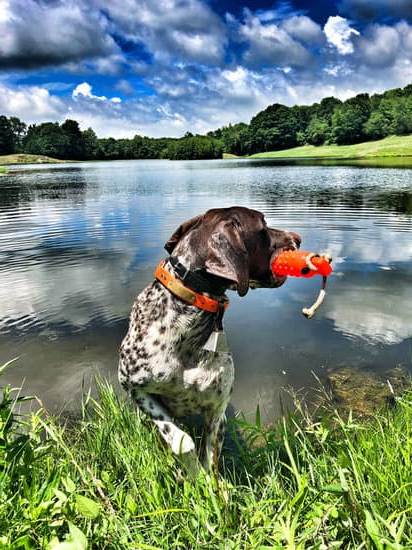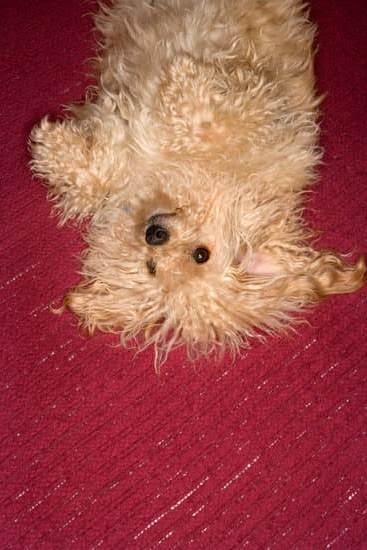Obedience training a hyper dog can be a challenging yet rewarding experience for any pet owner. Establishing a strong bond with your furry friend is crucial in navigating through the journey of obedience training. Understanding the characteristics and reasons behind your hyperactive dog’s behavior is the first step in addressing their needs effectively.
Hyperactive dogs often display excessive energy, impulsiveness, and difficulty focusing, making obedience training more demanding. Identifying common triggers for their hyperactivity can help tailor your training approach accordingly. Patience and consistency are key virtues when setting realistic goals for your dog’s obedience training journey. By establishing achievable milestones, you can track progress and celebrate small victories along the way.
Creating a structured training routine is essential to provide guidance and stability for your hyperactive dog. Incorporating physical exercise and mental stimulation into their daily schedule can help channel their excess energy productively. Utilizing positive reinforcement techniques can encourage desired behaviors and strengthen the bond between you and your furry companion during training sessions.
Understanding Your Hyperactive Dog
Hyperactive dogs can present unique challenges when it comes to obedience training. These dogs are often characterized by excessive energy, difficulty focusing, and a tendency to get easily distracted. It is important to recognize that hyperactivity in dogs can be caused by a variety of factors, including genetics, environment, and lack of mental stimulation. Understanding the underlying reasons behind your dog’s hyperactive behavior is essential in order to effectively address it.
To obedience train a hyper dog, it is crucial to channel their energy in a positive direction and provide them with the mental and physical exercise they need. One effective way to manage a hyperactive dog’s behavior is through structured training routines that incorporate both physical activities and mental stimulation. This can help tire out your dog and redirect their excess energy towards learning and following commands.
In addition to establishing a structured routine for training sessions, it is important to use positive reinforcement techniques when teaching basic obedience commands. Rewarding your hyper dog for good behavior with treats, praise, or playtime can help reinforce desired behaviors and encourage them to focus during training. Consistency and patience are key when working with a hyperactive dog, as it may take time for them to learn new commands and behaviors.
Setting Realistic Training Goals
Patience and Consistency
Training a hyperactive dog can be challenging, but with patience and consistency, it is achievable. It’s essential to understand that results may not be immediate, and progress may take time. By being patient and consistent in your training efforts, you can gradually see improvements in your dog’s behavior. Consistency in commands, routines, and rewards will help your hyper dog understand what is expected of them.
Achievable Milestones
When setting training goals for your hyperactive dog, it’s crucial to establish achievable milestones along the way. Break down the overall obedience training process into smaller tasks that are easier for your dog to grasp. Celebrate small victories and progress to keep both you and your furry friend motivated. By setting realistic goals and acknowledging accomplishments, you can build confidence in your dog and yourself as a trainer.
Tracking Progress
To effectively set realistic training goals for your hyperactive dog, track their progress regularly. Keep a training journal or log of the behaviors you are working on and note any improvements or setbacks. Monitoring how your dog responds to different techniques can help you adjust your training methods accordingly.
By keeping track of progress, you can identify areas that need more focus and celebrate the successes along the way. Stay committed to your training goals, stay positive, and remain dedicated to helping your hyper dog become a well-behaved companion.
Creating a Structured Training Routine
When it comes to obedience training a hyper dog, creating a structured training routine is key to success. Hyperactive dogs thrive on consistency and routine, so establishing a daily schedule for training sessions can help keep them focused and engaged. Incorporating physical exercise and mental stimulation into your dog’s routine is also important in managing their energy levels.
To start, set aside specific times each day for training sessions with your hyperactive pup. Consistency is key, so try to stick to the same timing and duration for each session. Make sure to choose a quiet and distraction-free environment for training to help your dog stay focused. Additionally, incorporating short breaks between sessions can help prevent burnout and keep your dog motivated.
Positive reinforcement techniques are essential in obedience training a hyper dog. Rewarding good behavior with treats, praise, or playtime can help reinforce the desired actions. It’s important to be patient and consistent with your training approach, as it may take time for your hyperactive dog to understand and respond to commands effectively. By creating a structured training routine that focuses on positive reinforcement, you can effectively teach your hyper dog obedience skills while strengthening the bond between you.
Overall, by implementing a structured training routine that includes physical exercise, mental stimulation, and positive reinforcement techniques, you can effectively obedience train a hyperactive dog. Remember that every dog is unique, so be patient and adaptable in your training approach. With time and effort, you will see improvements in your furry friend’s behavior and strengthen the bond between you both.
Teaching Basic Obedience Commands
Teaching your hyper dog basic obedience commands is a crucial step in their training journey. By teaching commands such as sit, stay, come, and heel, you can establish clear communication with your furry friend and set the foundation for more advanced training techniques. Here are some tips on how to effectively teach these basic commands to your hyperactive dog:
Start With One Command at a Time
Begin by focusing on one command at a time to prevent overwhelming your hyper dog. Start with a command like “sit” and use positive reinforcement techniques such as treats or praise when they successfully follow the command. Repeat the command consistently and be patient with your dog as they learn.
Use Positive Reinforcement
Positive reinforcement is key when teaching obedience commands to a hyperactive dog. Rewarding your furry friend for obeying commands will encourage them to continue displaying the desired behavior. Make sure to use high-value treats or toys that motivate your dog during training sessions.
Keep Training Sessions Short and Engaging
Hyperactive dogs may have shorter attention spans, so it’s important to keep training sessions short, fun, and engaging. Aim for multiple short training sessions throughout the day rather than one long session. Incorporate playtime and interactive toys into the training routine to keep your dog focused and excited about learning.
By following these tips and being consistent in your approach, you can successfully teach basic obedience commands to your hyperactive dog. Remember that every dog is unique, so be patient and adjust your training methods as needed to cater to your furry friend’s individual needs and energy levels.
Managing Hyperactivity Through Training
A key aspect of obedience training a hyperactive dog is effectively managing their excess energy through structured training methods. Hyperactive dogs often have an abundance of energy that can make it challenging to keep them focused during training sessions.
One effective technique for managing hyperactivity is to provide ample opportunities for physical exercise and mental stimulation. Incorporating activities such as long walks, playtime, and interactive toys can help channel your dog’s energy in a positive way, making them more receptive to obedience training.
In addition to physical exercise, implementing strategies for maintaining focus and attention during training sessions is crucial when working with a hyperactive dog. Using techniques like short, frequent training sessions and providing rewards for good behavior can help keep your dog engaged and motivated. It’s important to be patient and understanding while working with your hyper dog, as building their ability to concentrate will take time and consistency.
Behavioral issues may arise during the obedience training process, especially with hyperactive dogs. It’s essential to address these issues proactively and seek guidance from a professional trainer if needed.
By setting clear boundaries, using positive reinforcement techniques, and staying consistent in your approach, you can effectively manage your dog’s hyperactivity and facilitate their learning process. With patience, dedication, and the right training methods, you can overcome the challenges of obedience training a hyperactive dog and strengthen the bond between you and your furry companion.
Building Trust and Bonding With Your Dog
Creating a strong bond with your hyperactive dog is essential for successful obedience training. Trust is the foundation of this relationship, and it is crucial to establish trust through positive interactions and consistent communication. Here are some tips on how to build trust and strengthen the bond with your furry friend:
- Spend quality time together: Dedicate time each day to engage in activities that your dog enjoys, such as playing fetch, going for walks, or simply cuddling on the couch. This quality time helps your dog associate you with positive experiences and builds a sense of security.
- Use positive reinforcement: When training your hyperactive dog, focus on rewarding good behavior with treats, praise, or playtime. Positive reinforcement creates a positive association with obedience training and strengthens the bond between you and your furry companion.
- Be patient and understanding: Hyperactive dogs may require additional time and patience during training sessions. Approach each training session with a calm and patient demeanor, understanding that progress may take time. Consistency in your approach will help build trust over time.
Building trust and bonding with your hyper dog is a rewarding journey that requires dedication and commitment. By investing time and effort into strengthening your relationship, you not only improve obedience training results but also create a deep connection with your furry friend based on trust and mutual respect.
- Remember that every dog is unique: Each hyperactive dog has its own personality, preferences, and triggers. Take the time to understand what makes your furry friend tick, tailor your training approach accordingly, and celebrate their individuality throughout the process.
- Communicate effectively: Communication plays a key role in building trust with your dog. Learn to read their body language, respond to their cues appropriately, and establish clear signals for commands. Effective communication fosters understanding between you and your hyperactive dog.
- Seek professional guidance if needed: If you encounter challenges or struggles during obedience training, don’t hesitate to seek help from professional trainers or behaviorists. They can provide valuable insights, techniques, and support to address specific issues and enhance trust-building efforts with your furry companion.
Consistency and Continued Learning
Owning a hyperactive dog can be both a rewarding and challenging experience. One of the key factors in successfully obedience training a hyper dog is consistency and continued learning. By establishing a routine and committing to ongoing skill development, you can help your furry friend channel their energy in positive ways. Here are some tips on how to maintain consistency and continue learning throughout your dog’s obedience training journey:
- Consistency is Key: Consistency is essential when it comes to training a hyperactive dog. By sticking to a regular schedule for training sessions, meal times, exercise, and playtime, you can create a sense of stability and predictability for your pet.
- Patience and Persistence: Obedience training a hyper dog requires patience and persistence. It may take time for your furry friend to learn new commands or behaviors, so it’s important to remain patient and consistent in your approach.
- Continued Learning: Ongoing learning is crucial for both you and your dog. Keep exploring new techniques, strategies, and resources to enhance your training efforts. Attend obedience classes, seek guidance from professional trainers, or join online forums to connect with other pet parents facing similar challenges.
By focusing on consistency and continued learning, you can make significant progress in obedience training your hyperactive dog. Remember that every dog is unique, so be open to adapting your approach based on your furry companion’s individual needs and personality traits. With dedication and persistence, you can build a strong bond with your hyperactive dog while helping them become well-behaved members of the family.
Conclusion
In conclusion, obedience training a hyperactive dog may present its challenges, but with patience, consistency, and understanding, it is definitely achievable. By taking the time to understand your hyperactive dog’s behavior and triggers, setting realistic training goals, creating a structured routine, teaching basic commands effectively, managing their excess energy positively, and building trust through bonding activities, you can make significant progress in their obedience journey.
It is essential to remember that each dog is unique, and what works for one may not work for another. Therefore, it’s important to be flexible and adaptable in your training approach while staying committed to the process. Building a strong bond with your furry friend through training not only enhances their obedience but also strengthens your relationship with them.
Ultimately, the journey of how to obedience train a hyper dog is one that requires dedication and effort from both the owner and the pet. Embrace the challenge with optimism and determination, knowing that the rewards of a well-trained and well-behaved companion are truly priceless. So keep learning, stay consistent, and enjoy the progress you make together on this fulfilling training adventure.
Frequently Asked Questions
How Do You Discipline a Hyper Dog?
Disciplining a hyper dog requires a combination of patience, consistency, and positive reinforcement. It’s important to provide plenty of exercise to help release their pent-up energy. Using redirection techniques and commands to refocus their attention can also be effective in managing their behavior.
How Do You Train a Disobedient Hyper Dog?
Training a disobedient, hyper dog involves establishing clear boundaries and rules from the start. Consistent training sessions that focus on positive reinforcement for good behavior can help them learn what is expected of them. Incorporating mental stimulation activities can also aid in channeling their energy in a constructive way.
How Do I Stop My Dog From Being Hyper?
To help stop your dog from being hyper, it’s crucial to ensure they are getting enough physical exercise and mental stimulation daily. Providing interactive toys, puzzle games, and obedience training can help keep them engaged in productive activities. Consistency in training methods and setting clear expectations will also contribute to managing their hyperactivity.

Welcome to the blog! I am a professional dog trainer and have been working with dogs for many years. In this blog, I will be discussing various topics related to dog training, including tips, tricks, and advice. I hope you find this information helpful and informative. Thanks for reading!





